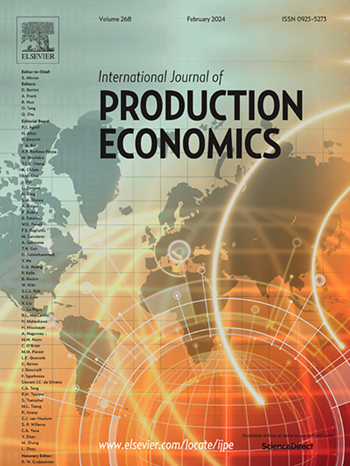Platform's blockchain introduction strategy with considering competition between new and refurbished products
IF 9.8
1区 工程技术
Q1 ENGINEERING, INDUSTRIAL
引用次数: 0
Abstract
As the second-hand market continues to grow, many retail platforms initially specializing in selling new products (e.g., Amazon, JD, and Walmart.com) have begun allowing refurbishers to directly sell refurbished goods on their platforms and gain additional profits. The platform can provide blockchain certification services for refurbishers to eliminate consumers' concerns about quality. In contrast to the existing literature, which primarily examines the introduction of blockchain technology from the perspective of cost factors, this paper investigates the platform's blockchain introduction in the context of competition between the new and refurbished products and its impacts on the manufacturer's and the refurbisher's profitability. Motivated by practices, two prevalent selling modes for the new product are considered: reselling mode (R) and agency selling mode (A). Even without considering the cost of blockchain, we find that the platform may have no incentive to introduce blockchain under both modes because it could trigger a severe cannibalization problem or an excessively high price for the refurbished product. The refurbisher (manufacturer) benefits with (without) blockchain under mode R, but this result occurs under mode A only when the blockchain service fee is low. We also discuss the welfare and environmental implications of blockchain. We find that the selling modes may modify the environmental implications of blockchain, but not the welfare implications of blockchain.
考虑到新产品和翻新产品之间的竞争,平台区块链的引入策略
随着二手市场的持续增长,许多最初专门销售新产品的零售平台(如亚马逊、京东和沃尔玛)已经开始允许翻新商在其平台上直接销售翻新商品,并获得额外的利润。该平台可以为翻新商提供区块链认证服务,消除消费者对质量的担忧。现有文献主要从成本因素的角度考察区块链技术的引入,与此相反,本文在新产品和翻新产品竞争的背景下研究平台区块链的引入及其对制造商和翻新商盈利能力的影响。在实践的激励下,我们考虑了两种流行的新产品销售模式:转售模式(R)和代理销售模式(A)。即使不考虑区块链的成本,我们发现平台在两种模式下都可能没有动力引入区块链,因为它可能引发严重的同类相食问题或翻新产品的价格过高。在模式R下,有(没有)区块链时,翻新商(制造商)受益,但在模式A下,只有当区块链服务费较低时才会出现这种结果。我们还讨论了b区块链的福利和环境影响。我们发现,销售模式可能会改变区块链的环境影响,但不会改变区块链的福利影响。
本文章由计算机程序翻译,如有差异,请以英文原文为准。
求助全文
约1分钟内获得全文
求助全文
来源期刊
CiteScore
21.40
自引率
7.50%
发文量
266
审稿时长
52 days
期刊介绍:
The International Journal of Production Economics focuses on the interface between engineering and management. It covers all aspects of manufacturing and process industries, as well as production in general. The journal is interdisciplinary, considering activities throughout the product life cycle and material flow cycle. It aims to disseminate knowledge for improving industrial practice and strengthening the theoretical base for decision making. The journal serves as a forum for exchanging ideas and presenting new developments in theory and application, combining academic standards with practical value for industrial applications.

 求助内容:
求助内容: 应助结果提醒方式:
应助结果提醒方式:


